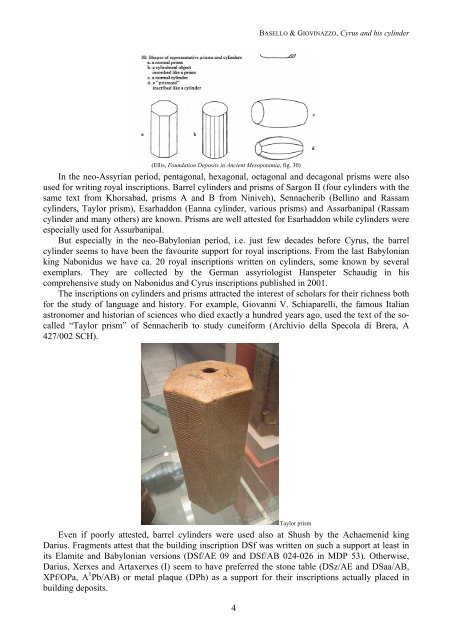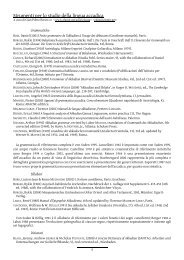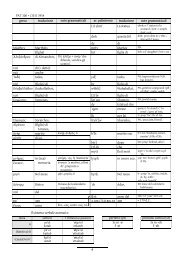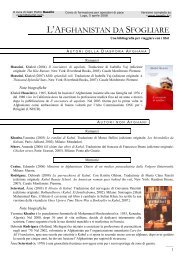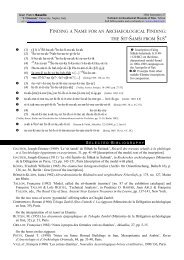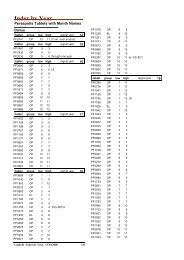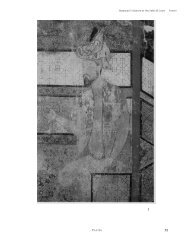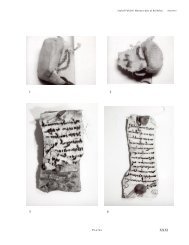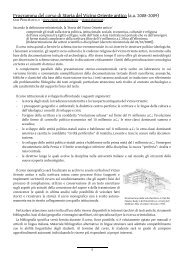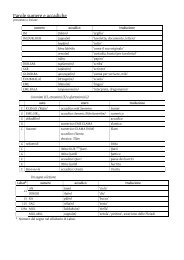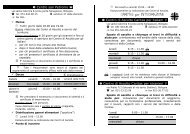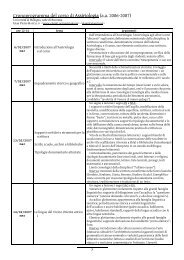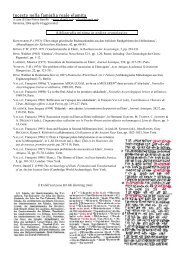Cyrus and his Cylinder: The King and his Mirror - Elam.net
Cyrus and his Cylinder: The King and his Mirror - Elam.net
Cyrus and his Cylinder: The King and his Mirror - Elam.net
You also want an ePaper? Increase the reach of your titles
YUMPU automatically turns print PDFs into web optimized ePapers that Google loves.
BASELLO & GIOVINAZZO, <strong>Cyrus</strong> <strong>and</strong> <strong>his</strong> cylinder<br />
(Ellis, Foundation Deposits in Ancient Mesopotamia, fig. 30)<br />
In the neo-Assyrian period, pentagonal, hexagonal, octagonal <strong>and</strong> decagonal prisms were also<br />
used for writing royal inscriptions. Barrel cylinders <strong>and</strong> prisms of Sargon II (four cylinders with the<br />
same text from Khorsabad, prisms A <strong>and</strong> B from Niniveh), Sennacherib (Bellino <strong>and</strong> Rassam<br />
cylinders, Taylor prism), Esarhaddon (Eanna cylinder, various prisms) <strong>and</strong> Assurbanipal (Rassam<br />
cylinder <strong>and</strong> many others) are known. Prisms are well attested for Esarhaddon while cylinders were<br />
especially used for Assurbanipal.<br />
But especially in the neo-Babylonian period, i.e. just few decades before <strong>Cyrus</strong>, the barrel<br />
cylinder seems to have been the favourite support for royal inscriptions. From the last Babylonian<br />
king Nabonidus we have ca. 20 royal inscriptions written on cylinders, some known by several<br />
exemplars. <strong>The</strong>y are collected by the German assyriologist Hanspeter Schaudig in <strong>his</strong><br />
comprehensive study on Nabonidus <strong>and</strong> <strong>Cyrus</strong> inscriptions published in 2001.<br />
<strong>The</strong> inscriptions on cylinders <strong>and</strong> prisms attracted the interest of scholars for their richness both<br />
for the study of language <strong>and</strong> <strong>his</strong>tory. For example, Giovanni V. Schiaparelli, the famous Italian<br />
astronomer <strong>and</strong> <strong>his</strong>torian of sciences who died exactly a hundred years ago, used the text of the socalled<br />
“Taylor prism” of Sennacherib to study cuneiform (Archivio della Specola di Brera, A<br />
427/002 SCH).<br />
Taylor prism<br />
Even if poorly attested, barrel cylinders were used also at Shush by the Achaemenid king<br />
Darius. Fragments attest that the building inscription DSf was written on such a support at least in<br />
its <strong>Elam</strong>ite <strong>and</strong> Babylonian versions (DSf/AE 09 <strong>and</strong> DSf/AB 024-026 in MDP 53). Otherwise,<br />
Darius, Xerxes <strong>and</strong> Artaxerxes (I) seem to have preferred the stone table (DSz/AE <strong>and</strong> DSaa/AB,<br />
XPf/OPa, A 1 Pb/AB) or metal plaque (DPh) as a support for their inscriptions actually placed in<br />
building deposits.<br />
4


